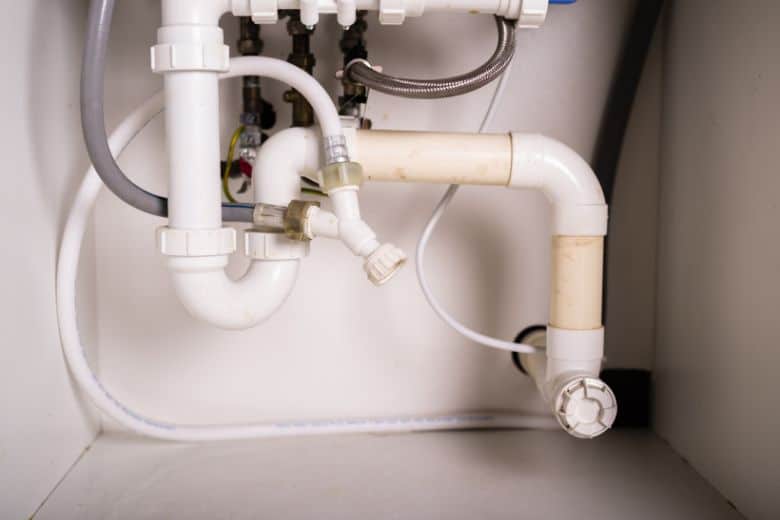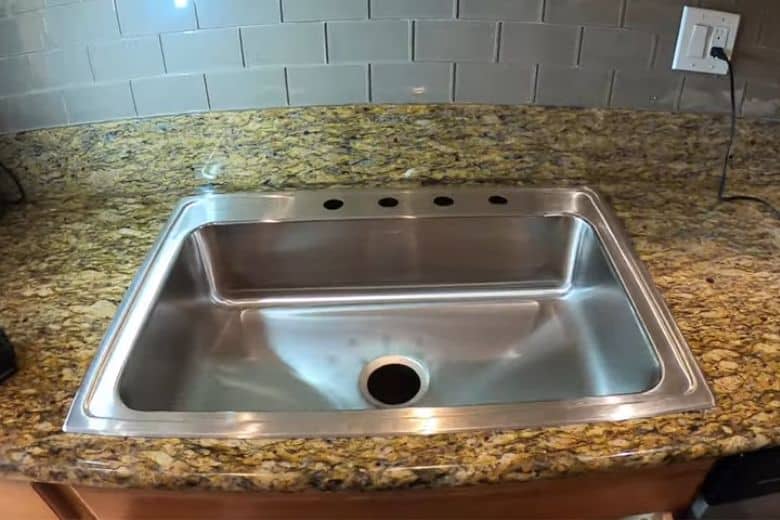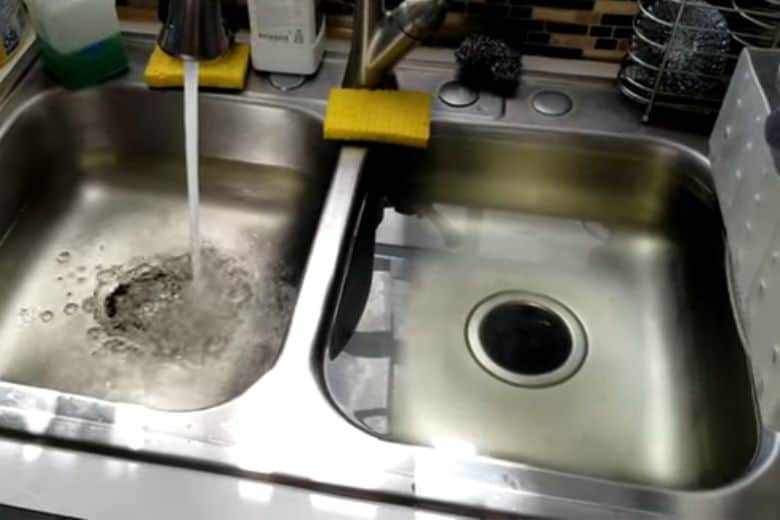Most people are unaware of the existence of the P-trap. But guess what? That little curve in the pipe under your sink is doing some big-time work! The P-trap is a U-shaped pipe section holding a small amount of water, creating a seal to prevent sewer gases from entering your home.
With time, P-traps accumulate hair, soap scum, and other debris, which can cause clogs or odors. So, it’s not just about keeping things clean; it’s also about ensuring your plumbing works efficiently, and your home smells fresh.
But removing the P-trap and cleaning it is a hassle process. In this regard, today, we will uncover the secrets of how to clean P-trap without removing it. These can save you both time and money.
We will walk you through an in-depth process, ensuring your P-trap is as clean as ever without the removal hassle.
Let’s start!
Recognize the Signs of a Clogged P-Trap
Before deepening the cleaning process, you must recognize the signs of a clogged P-Trap. Slow drain sinks, unpleasant odors emanating from the drain, and gurgling noises are common indicators.
- Slow Draining: A slow-draining sink is often the first sign. If the water takes longer than usual to drain, it might be time to clean the P-Trap.
- Unpleasant Odors: Accumulating debris in the P-Trap can lead to unpleasant odors. These smells are a clear sign that your P-Trap requires cleaning.
- Gurgling Noises: Sometimes, you may hear gurgling noises from the drain. It usually indicates that air is trapped, signaling a possible clog in the P-Trap.
The Tools You Will Need
- Plumbing Snake: The mighty plumbing snake is your best buddy here. It’s like a flexible cable that you insert into the P-trap to remove any clogs. Think of it as a clog-hunting mongoose!
- Wet/Dry Vacuum: Oh, the versatile wet/dry vacuum! It’ll suck up dry debris and any standing water in the P-trap. Talk about a cleaning superhero!
- Cleaning Solution: Choose a good-quality cleaning solution that’s suitable for pipes. Imagine this as the magical potion that revives your P-trap to its former glory.
- Plastic Bucket: Having a trusty plastic bucket handy is essential. The trusted sidekick catches the water and gunk without making a mess.
Step-by-Step Guide to Cleaning the P-Trap Without Removing
Step 1: Prepare Your Working Area
Let’s set the stage! Clear out everything under the sink to give yourself enough space to work. Lay down some old towels or rags to catch any water that might spill. It’s like rolling out the red carpet for your cleaning mission.
Step 2: Loosen and Drain the P-Trap
Place your plastic bucket under the P-trap. Now gently loosen the nuts holding the P-trap in place. Don’t remove them completely; just enough to drain the water and debris into the bucket. It’s like opening the gates to a dam!
Step 3: Use a Plumbing Snake
Now, enter the brave plumbing snake. Please insert it into the P-trap and twist it to grab onto the clogs. Keep going until you feel that you’ve conquered the clogs within. The P-Trap’s guardian has been defeated!
Step 4: Apply Cleaning Solution
Pour the cleaning solution down the drain, and let it sit for the time recommended on the bottle. It is the potion doing its magic, breaking down all the gunk.
Step 5: Use a Wet/Dry Vacuum
Set the wet/dry vacuum to wet mode and vacuum out the P-trap. It is like the final sweeping move, ensuring no villains (debris) are left behind.
Step 6: Finishing Up
Tighten the nuts back on the P-trap and run some water to ensure no leaks. Voila! You have successfully cleaned the P-Trap without removing it.
Alternative Method
Our step-by-step solution surely helps you to clean the p-trap without removing it. Despite this fact, we have included a few alternative methods. Have a look.
Method 1: Use Boiling Water
Before you go hog wild with fancy tools, try this. Boil a kettle full of water, then pour it down the drain. Sometimes, that’s all it takes to send the gunk packing.
Method 2: The Baking Soda and Vinegar Solution
Pour a half-cup of baking soda down the drain, followed by an equal amount of vinegar. This combination will cause a chemical reaction that will dissolve fatty acids. Let it sit for 30 minutes.
Method 3: Drain Cleaning Bladder
Have you ever heard of a drain-cleaning bladder? You can attach it to a hose, stick it in the drain, and watch as it expands and blasts through clogs with water pressure. It’s the big guns for stubborn clogs.
Method 4: Enzymatic Drain Cleaners
Enzymatic drain cleaners are your friends for those who like to play the long game. They use enzymes to munch away clogs over time. It’s like sending Pac-Man down your drain!
Method 5: Plunging the Drain
If you suspect a clog in the P-Trap, start by using a plunger. Fill the sink partially with water and use the plunger to create a seal over the drain. Push down and pull up vigorously for about 20-30 seconds. It can often dislodge the clog.
Additional Tips and Considerations
- Regularly clean your P-trap every few months to prevent debris buildup and maintain proper drainage.
- Avoid harsh chemical drain cleaners, which can damage the P-trap and other plumbing components.
- Consider using a drain strainer or stopper to catch debris before it enters the P-trap and the drainpipe.
- If you encounter persistent drainage issues or strong odors even after cleaning the P-trap, it is advisable to consult a professional plumber for further inspection and assistance.
Frequently Asked Questions
Can I clean the P-Trap without any tools?
Answer: It’s possible but not as effective. Basic tools like a plumbing snake and wet/dry vacuum are highly recommended.
Can clogged P-Traps affect my health?
Answer: If it’s severely clogged, it might allow sewer gases to enter your home, which can be harmful.
What should I do if I encounter a stubborn clog in the p-trap?
Answer: If you encounter a stubborn clog that cannot be removed by cleaning the p-trap, you should seek professional plumbing assistance. They have the expertise and specialized tools to address more severe clogs.
What if there is a leak after I finish cleaning?
Answer: Check if the nuts are properly tightened. If it still leaks, it’s best to contact a plumber.
Are there any preventive measures I can take to avoid p-trap clogs?
Answer: To prevent p-trap clogs, avoid disposing of large food particles, grease, or oil down the drain. Drain guards or filters can help trap solid debris and prevent them from entering the p-trap.
Conclusion
We have elucidated a thorough method on how to clean the P-trap without removing it. This process is not only efficient but also cost-effective. Remember to maintain your P-trap and seek professional help, if necessary, regularly.
Paul Newman is a blogger who writes about plumbing and home improvement. Over the past 20 years, I have worked as a plumber. My passion is to share my knowledge and experience with others to improve their homes.




